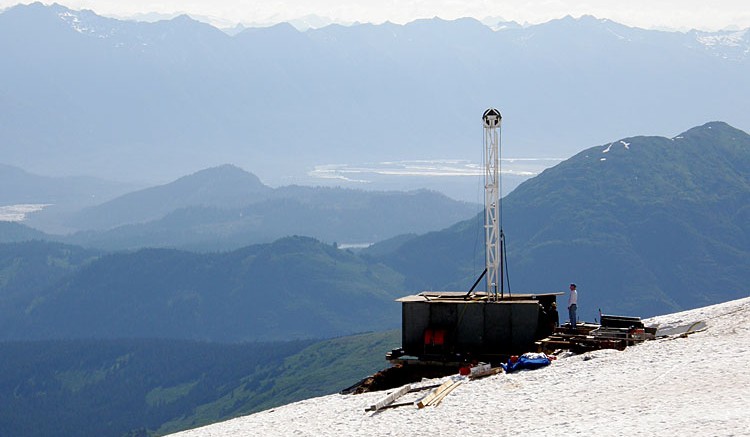VANCOUVER – For the last few years, the Palmer project in Alaska almost had it all: a high-grade polymetallic deposit with thick, continuous zones that could be mined using short lateral drifts to deposit ore beside a highway running to a year-round, deep-sea port.
In addition, the deposit is open to expansion in every direction and sits right in the middle of the best volcanogenic massive sulphide (VMS) belt in the world. There are logging and placer mining operations next door. A power line parallels the highway past the project.
Indeed, Palmer had it all – except money. Owner Constantine Metals (CEM-V) wanted to advance the property but gloomy markets and a sagging share price made funding inaccessible.
So Constantine spent its time looking for a Palmer partner. It was time well spent: on Feb. 1st Constantine signed a formal deal to joint-venture the project with Dowa Metals & Mining, a major Japanese zinc and copper refiner and smelter.
If Dowa wants to earn its 49% stake and lock in certain offtake rights to future production, it will have to pour $22 million into the ground at Palmer over the next four years.
Constantine, however, will remain project operator. For Constantine’s vice-president of exploration, Darwin Green, it is a perfect setup.
“We couldn’t be any happier with this deal,” he said. Green imagines that four years of Dowa-funded advancement could easily position Palmer for development. At that point Palmer will become a joint venture, with Constantine still holding 51%.
“With a partner of Dowa’s caliber funding half of the development costs, Constantine should have little trouble coming up with our 51%,” said Green. “It’s a scenario that lets us avoid the risk and vulnerability of trying to finance the hundreds of millions required to develop a project alone, a situation wherein many junior with quality assets run into problems even when they have positive feasibility studies in hand.”
Palmer would likely be developed as an underground operation. The deposit is made up of several thick lobes of massive sulphide mineralization that dip steeply, which means it could be accessed using short lateral drifts.
The deposit at Palmer is still classified as an inferred resource, one that currently stands at 4.75 million tonnes grading 1.84% copper, 4.57% zinc, 0.15% lead, 0.28 gram gold per tonne, and 29.1 grams silver per tonne.
Those tonnes are contained in the South Wall, which encompasses three stratigraphically stacked massive sulphide lenses, and in two zones known as RW East and RW West that are separated by 300 metres of untested ground. The South Wall and RW lenses are within the same stratigraphic intervals, but sit on opposite limbs of a large-scale anticline. That suggests the deposit is part of a sizeable massive sulphide system, and indeed the numerous showings and prospects at Palmer lie along two mineralized trends that extend for a cumulative 14 km of strike. In addition, all zones intersected to date remain open to expansion laterally and at depth.
Supporting the potential for much more massive sulphide at Palmer is its neighbourhood. Palmer is part of the Alexander Terrane, the same belt that hosts the Greens Creek and Windy Craggy deposits. Greens Creek is one of the world’s richest VMS deposits, while Windy Craggy is one of the largest.
One problem that can crop up with VMS deposits is metallurgy – with some VMS deposits the mineral types and sizes can make it very difficult, if not economically impossible, to separate the metals. However, it does not look like that would be a problem at Palmer. Constantine has not completed extensive metallurgical testwork but preliminary tests indicate that the deposit’s coarse grains and simple mineralogy allow for excellent metal recoveries.
As mentioned, Palmer is very well situated in terms of infrastructure. A highway runs along one edge of the property and 60 km later reaches the year-round deep-sea port in Haines, Alaska, from whence concentrate ships can head straight to Asia. That was likely a key selling point for Dowa.
Dowa is a very well-established company, with a history that reaches back to the mid-1800s. VMS deposits are Dowa’s specialty; Kuroko, another name used to describe VMS mineralization, originated from the Kuroko deposits in Kosaka, Japan, where Dowa first got started. With literally hundreds of years of experience, it’s no surprise that Dowa has developed specialized smelting techniques for this relatively complex polymetallic ores.
“That history is why it seems particularly fitting to be partnering up with them on Palmer,” said Green. “The last of their domestic base metal mines were exhausted by the mid-1980s so Japanese smelting companies have had to secure concentrate in international markets ever since. Typically they purchase concentrate from operating mines and Dowa does have an interest in three operations. Hopefully Palmer will become their fourth operating mine.”
Constantine’s share price doubled when news of the partnership was originally announced in early November, jumping from 5¢ to 10¢. It has since remained between 7¢ and 10¢. Constantine has 114.5 million shares outstanding.


Be the first to comment on "Constantine finds perfect partner for Palmer"